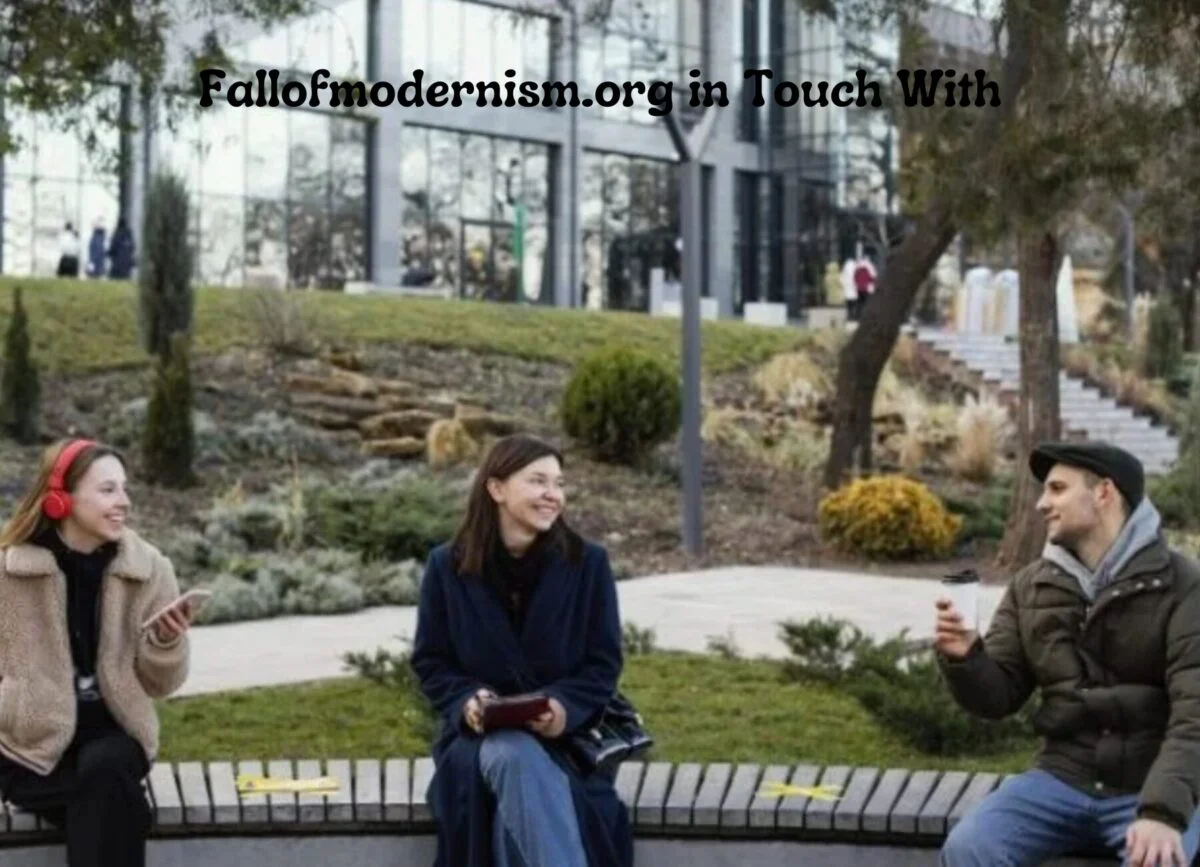The fall of modernism marks a significant turning point in the history of art, architecture, and culture. After dominating much of the 20th century, modernism’s ideals and aesthetics began to wane, leading to new artistic and cultural movements. The domain FallofModernism.org is dedicated to tracing this shift, from the bold, forward-thinking designs of modernism to the eclectic and often contradictory forms of postmodernism.
Modernism was a movement that sought to break with traditional forms and structures, proposing instead new ways of seeing and representing the world. However, as the 20th century progressed, the optimism of modernist ideals began to be questioned, leading to its eventual decline. In its wake, postmodernism emerged, characterized by its rejection of the grand narratives and universal truths that modernism once championed.
Understanding Modernism: The Origins and Principles
Modernism was born in the late 19th and early 20th centuries, a time of profound social, political, and technological change. The movement encompassed a wide range of fields, including art, architecture, literature, and philosophy, all united by a desire to break free from the constraints of traditional forms. The industrial revolution, the rise of urbanization, and the horrors of World War I all contributed to a growing sense of disillusionment with the old ways of thinking and doing.
In art, modernism is associated with movements such as cubism, surrealism, and abstract expressionism, which sought to depict the world in new and innovative ways. Artists like Pablo Picasso, Jackson Pollock, and Marcel Duchamp became the figureheads of this movement, pushing the boundaries of what art could be. In architecture, modernism was defined by a focus on simplicity, functionality, and the use of new materials like steel and glass. The Bauhaus movement, led by figures like Walter Gropius and Ludwig Mies van der Rohe, embodied these ideals, promoting a vision of architecture that was both aesthetically minimal and socially progressive.
However, while modernism initially represented a bold new direction, it was not without its critics. As the movement progressed, many began to question whether modernism’s emphasis on progress and innovation had gone too far, leading to a sterile, impersonal, and overly rational world.
Why Did Modernism Decline? Key Factors Leading to Its Fall
The fall of modernism was not a sudden event but rather a gradual process that took place over several decades. Several key factors contributed to this decline, including:
- Disillusionment with Progress: One of the central tenets of modernism was the belief in progress and the power of human reason to improve the world. However, the devastation of two world wars, along with the rise of totalitarian regimes in Europe, led many to question whether this progress was really leading to a better world. The horrors of the Holocaust and the atomic bomb further shattered the modernist faith in reason and science.
- Criticism of Modernist Architecture: While modernist architecture was initially celebrated for its clean lines and functional designs, by the mid-20th century, it had become the target of widespread criticism. Many people found modernist buildings to be cold, impersonal, and alienating, lacking the warmth and humanity of more traditional architectural styles. The failure of many modernist housing projects, such as the infamous Pruitt-Igoe complex in St. Louis, only reinforced these negative perceptions.
- The Rise of Postmodernism: As dissatisfaction with modernism grew, a new movement began to emerge in the 1960s and 1970s: postmodernism. Where modernism had sought to create universal truths and grand narratives, postmodernism celebrated fragmentation, contradiction, and ambiguity. In art and architecture, this led to a rejection of the minimalist aesthetic of modernism in favor of eclecticism and irony. Architects like Robert Venturi and Philip Johnson embraced this new approach, creating buildings that mixed historical references with bold, playful forms.
Modernism’s Legacy: Its Lasting Impact on Culture and Society
Despite its decline, modernism has left an indelible mark on contemporary culture. Its emphasis on innovation, experimentation, and the breaking of traditional boundaries continues to influence artists, architects, and designers to this day. Many of the ideas that were first introduced by modernists—such as the rejection of ornamentation in architecture, the use of new materials, and the exploration of abstract forms—remain central to contemporary practice.
Moreover, the issues that modernism grappled with, such as the relationship between art and society, the role of technology in shaping human experience, and the search for new forms of expression, are still relevant today. In many ways, the challenges that modernism faced are the same challenges that we continue to grapple with in the 21st century.
The Transition to Postmodernism: A New Artistic Paradigm
As modernism began to decline, postmodernism emerged as a dominant force in the art world. Where modernism had sought to create order and clarity, postmodernism embraced chaos and ambiguity. This new movement was characterized by its rejection of the idea that art should serve a higher purpose or convey a universal truth. Instead, postmodernists argued that art could be playful, ironic, and even contradictory.
Postmodern buildings often feature bold colors, decorative elements, and a mix of different architectural styles, creating a sense of playful irreverence. The work of architects like Michael Graves and Frank Gehry exemplifies this new approach, with buildings that defy the rigid formalism of modernist design.
FallofModernism.org: A Platform for Dialogue and Exploration
FallofModernism.org serves as a vital resource for anyone interested in exploring the complex history of modernism and its decline. The website offers a wealth of information on the key figures, movements, and events that shaped modernism, as well as detailed analyses of its eventual fall. Whether you’re a student, a scholar, or simply someone with an interest in the history of art and architecture, FallofModernism.org provides valuable insights and resources.
The site also encourages dialogue and discussion, offering visitors the opportunity to engage with the content and share their own perspectives on modernism and its legacy. Through blog posts, articles, and forums, FallofModernism.org fosters a sense of community among those who are passionate about the history and future of art and design.
Conclusion
The fall of modernism was a complex and multifaceted process that reflected broader shifts in culture, society, and politics. While modernism once represented a bold new vision for the future, its ideals ultimately came under scrutiny, leading to its decline and the rise of postmodernism. However, the legacy of modernism continues to shape our world today, influencing everything from art and architecture to philosophy and literature.
FallofModernism.org stands as a testament to the enduring significance of this movement, offering a platform for exploration, discussion, and reflection on the profound impact that modernism has had on our world. As we continue to navigate the challenges of the 21st century, the lessons of modernism remain as relevant as ever, reminding us of the power of art and design to shape the way we see and experience the world.
FAQs
What is the fall of modernism?
The fall of modernism refers to the gradual decline of the modernist movement in art, architecture, and culture, which took place during the mid-20th century. It was marked by growing dissatisfaction with modernism’s ideals of progress and innovation, leading to the rise of postmodernism.
Why did modernism decline?
Modernism declined due to a combination of factors, including disillusionment with the idea of progress after the devastation of two world wars, widespread criticism of modernist architecture, and the rise of postmodernism, which rejected modernism’s grand narratives and universal truths.
How did postmodernism differ from modernism?
Postmodernism rejected the ideas of universal truth, progress, and the minimalist aesthetic of modernism. Instead, it embraced ambiguity, contradiction, and eclecticism, favoring playful and ironic forms in both art and architecture.
Who were the key figures in modernism?
Key figures in modernism include artists like Pablo Picasso, Jackson Pollock, and Marcel Duchamp, as well as architects like Walter Gropius and Ludwig Mies van der Rohe, who played central roles in shaping the movement.
What impact did modernism have on architecture?
Modernism had a profound impact on architecture, promoting minimalist designs that emphasized simplicity, functionality, and the use of new materials. The Bauhaus movement was particularly influential in shaping modernist architecture, with its focus on creating socially progressive and aesthetically minimalist buildings.
Is modernism still relevant today?
Yes, modernism’s emphasis on innovation, experimentation, and the breaking of traditional boundaries continues to influence contemporary art and design. Many of the ideas introduced by modernists, such as the rejection of ornamentation and the exploration of abstract forms, remain central to current practices in both art and architecture.











